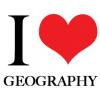- 1 reply
- 1,430 views
- Add Reply
- 1 reply
- 3,701 views
- Add Reply
- 0 replies
- 1,908 views
- Add Reply
- 0 replies
- 1,925 views
- Add Reply
- 0 replies
- 1,689 views
- Add Reply
TerrSet or IDRISI
By Maya007,
Hello all,
I am working with software TerrSet. How is it possible to export some values by selecting within a map. I dont want to consider industrial areas in a landcover map. So i want a map without industries from a landcover. Can someone tell me how is that done?
I have worked with ArcMap where we can just select the features from the attribute table and export the map with the selected features. Is there any option like that in here?
Thanks,
maaya
KH-9 satellite imagery
By Sonia,
Hi All,
I need to use some historical images to study land use changes and the one available to my study area is KH9 imagery so does anyone have an idea how to analyze historical imagery from the KH-9 satellite (Hexagon) operated between 1971 and 1984?
Thank you,
Sonia
Web-based GIS and Mapping Course
By indepthresearchservice,
Event: Web-based GIS and Mapping Course
Venue: Indepth Research Services, Nairobi, Kenya.
Event Date: 11th – 22nd June 2018.
NITA CERTIFIED
RECENT CLIENTS
INTRODUCTION
Web mapping focuses on disseminating and processing geographic information by means of Internet and World Wide Web. Combination of the web and GIS (Geographic Information Systems) has unlocked the potential of GIS, and put online maps and geospatial intelligence in the offices/homes
GIS and Remote Sensing for Agricultural Resource Management Course
By indepthresearchservice,
Event: GIS and Remote Sensing for Agricultural Resource Management Course
Venue: Indepth Research Services, Nairobi, Kenya.
Event Date: 11th – 15th June 2018.
NITA CERTIFIED
RECENT CLIENTS
INTRODUCTION
For optimum utilization of available agricultural land resources on a sustainable basis, timely and reliable information regarding their nature, extent and spatial distribution along with their potential and limitations is very important.
The e
Use of GIS and Remote Sensing in Disaster Risk Management Course
By indepthresearchservice,
Event: Use of GIS and Remote Sensing in Disaster Risk Management Course
Venue: Indepth Research Services, Nairobi, Kenya.
Event Date: 11th – 15th June 2018.
NITA CERTIFIED
RECENT CLIENTS
INTRODUCTION
Disaster risk information is spatial in nature and Geographic Information Systems (GIS) play an important role in disaster risk management. Rapid population growth and urbanization combined with extreme climatic events are causing a rapid increase in v
-
Forum Statistics
8.8k
Total Topics43.5k
Total Posts



